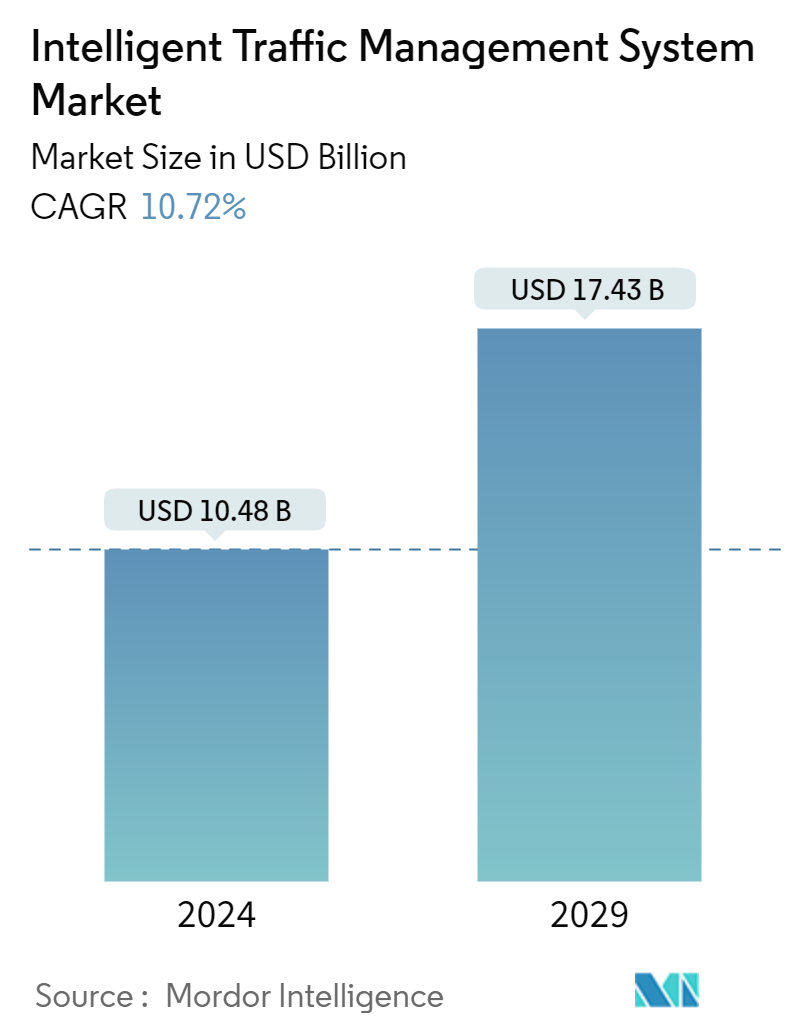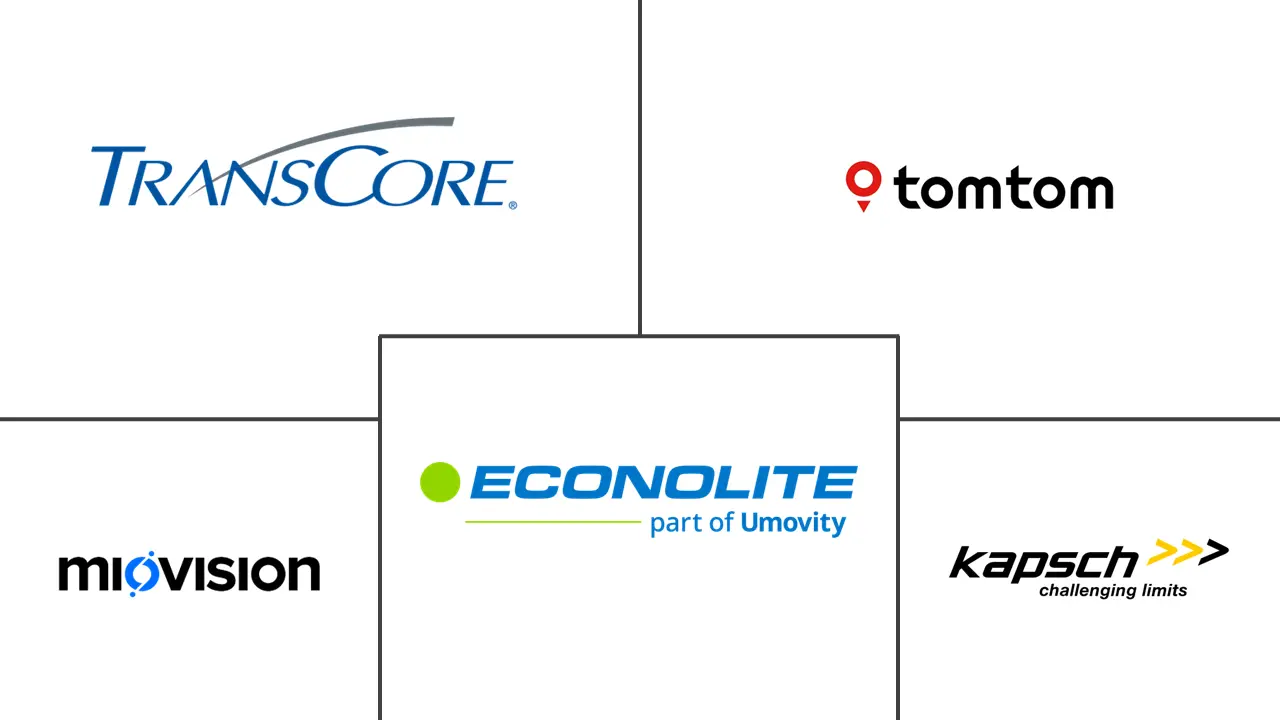
| Study Period | 2019 - 2029 |
| Market Size (2024) | USD 10.48 Billion |
| Market Size (2029) | USD 17.43 Billion |
| CAGR (2024 - 2029) | 10.72 % |
| Fastest Growing Market | North America |
| Largest Market | Asia Pacific |
| Market Concentration | Low |
Major Players
*Disclaimer: Major Players sorted in no particular order |
Intelligent Traffic Management System Market Analysis
The Intelligent Traffic Management System Market size is estimated at USD 10.48 billion in 2024, and is expected to reach USD 17.43 billion by 2029, growing at a CAGR of 10.72% during the forecast period (2024-2029).
- The rise of the Internet of Things (IoT) allows for connecting traffic signals, cameras, sensors, and vehicles, enabling real-time data collection and analysis. This connectivity enhances the effectiveness of intelligent traffic management systems. In addition, the proliferation of IoT devices in smart cities has led to higher demand for intelligent traffic management systems that can handle vast amounts of data from these devices and optimize urban services.
- In July 2024, Maharashtra's Pune Expressway is poised to roll out its inaugural AI-driven Intelligent Traffic Management System (ITMS). This pioneering system uses artificial intelligence and data analytics to optimize vehicle flow and enhance road safety. With its advanced capabilities, the technology automatically identifies a range of traffic violations, promising commuters a safer and more efficient journey. In response to a tragic accident on the Pune Expressway, where a bus carrying pilgrims collided with a tractor, resulting in the loss of five lives and injuries to 42 others, authorities have implemented an AI-powered ITMS.
- As cities become smarter globally, there is a growing demand for intelligent traffic management systems to manage the urban infrastructure efficiently, including traffic management, utilities, and public services. In June 2024, an Intelligent Traffic Management System (ITMS) worth INR 8.5 Crore will be implemented on the Bengaluru-Mysuru road network. The ITMS employs a network of 250 Automatic Number Plate Recognition (ANPR) cameras and 80 Red Light Violation Detection (RLVD) cameras strategically positioned at 50 crucial junctions. This advanced technology aids authorities in pinpointing traffic violations and enhancing overall road safety.
- As autonomous vehicles become more prevalent, the significant demand for intelligent traffic management systems increases. ITMS is crucial in managing mixed traffic environments where autonomous vehicles and human-driven share the road. An intelligent traffic management system is integral to vehicle-to-everything (V2X) communication and is essential for autonomous vehicles' safe and efficient operation in urban environments. In addition, citizens globally are increasingly demanding more efficient and reliable transportation systems. ITMS responds to these demands by reducing travel times and improving overall traffic conditions.
- Implementing an intelligent traffic management system requires significant investments in infrastructure, including installing cameras, sensors, communication networks, and data centers. These high costs can be prohibitive for smaller cities or regions with limited budgets. Furthermore, beyond the initial setup, ongoing maintenance costs can be high. Regular updates, repairs, and hardware and software replacements add to the long-term financial burden.
- Macroeconomic conditions like fluctuations in fuel prices can impact traffic patterns and the demand for intelligent traffic management systems. High fuel prices may reduce vehicle usage, lowering the urgency for intelligent traffic management systems, while low prices could have the opposite effect. Moreover, economic uncertainty, such as recessions or financial crises, can reduce public and private sector investment in new technologies, including the intelligent traffic management system.


